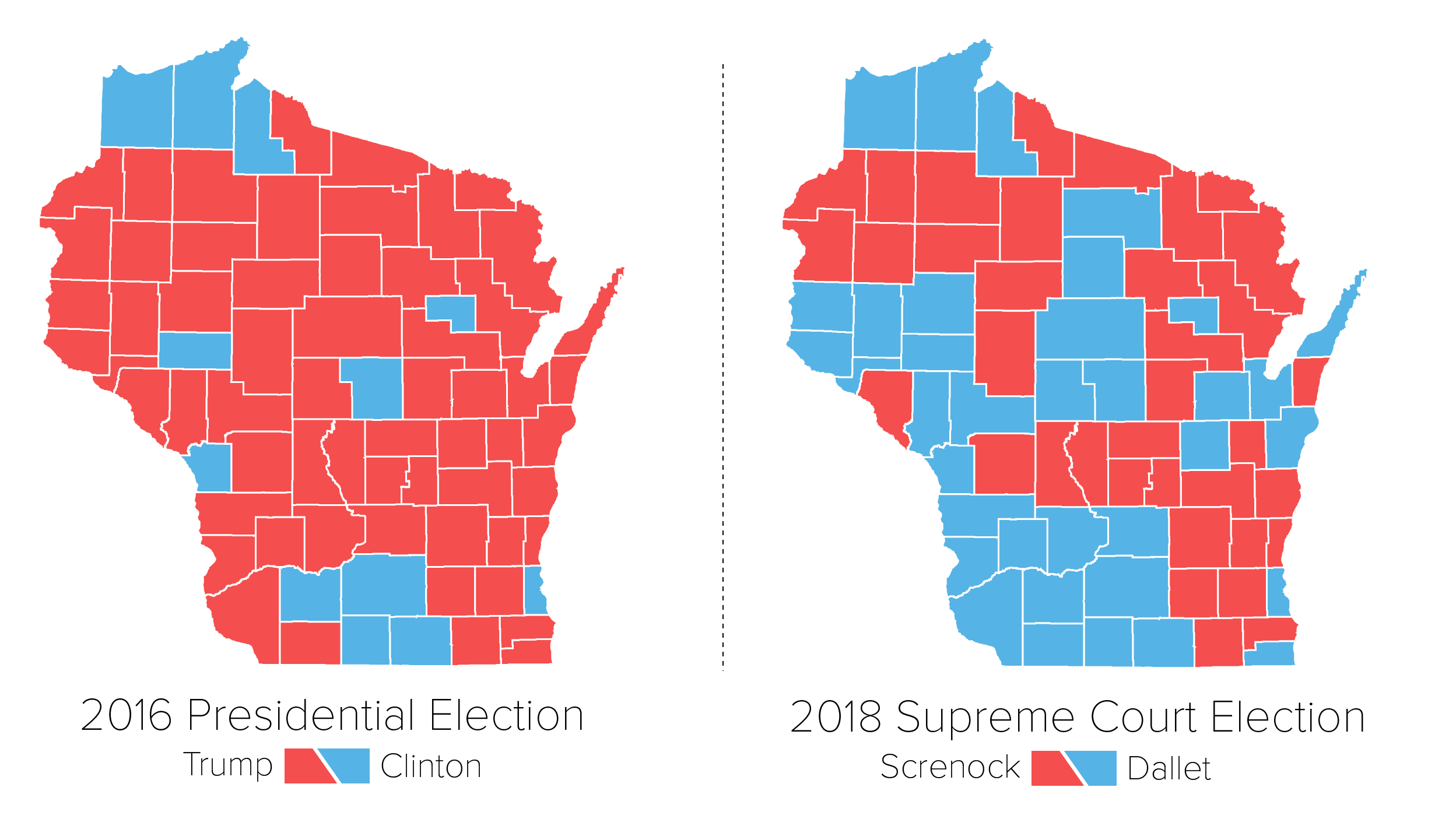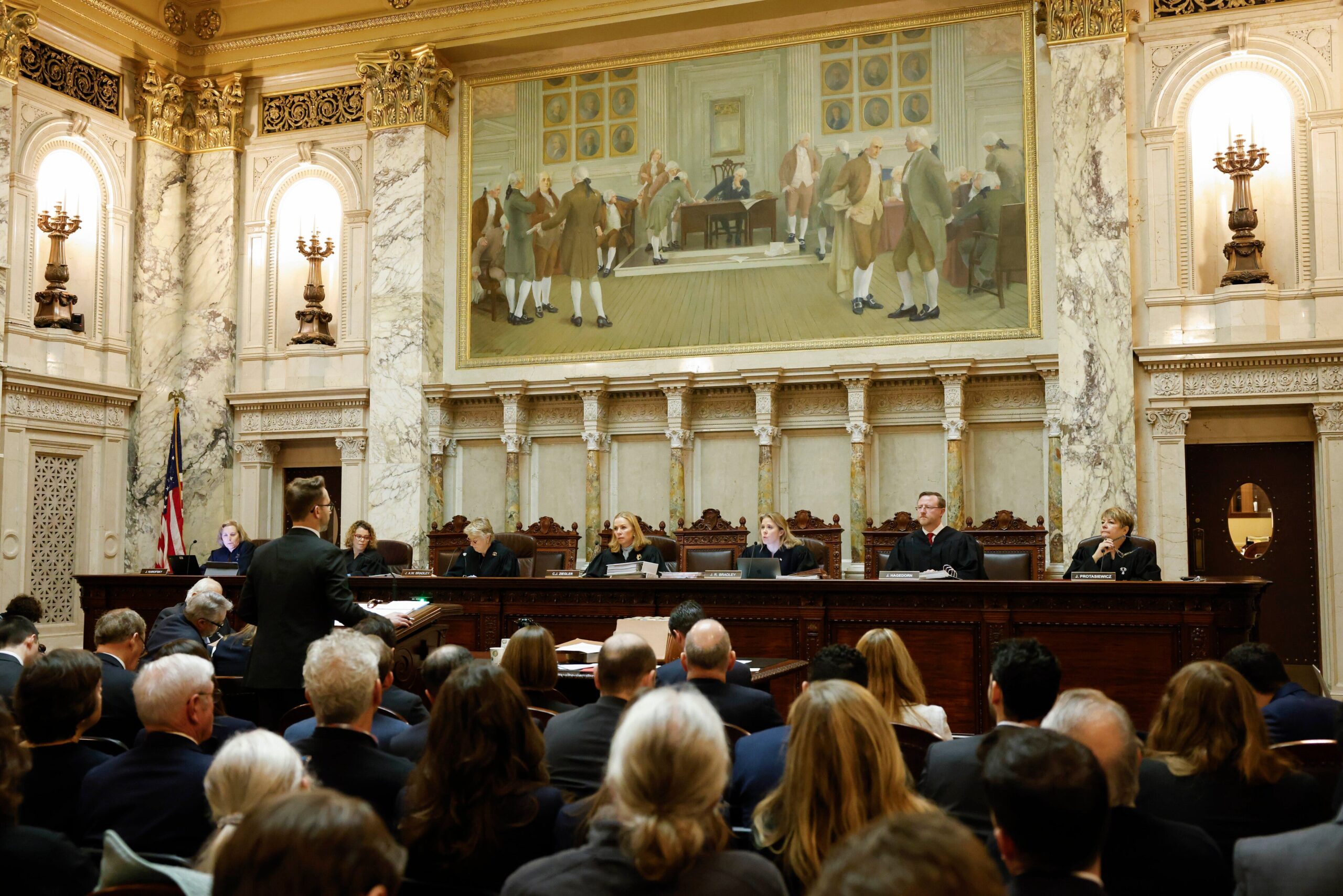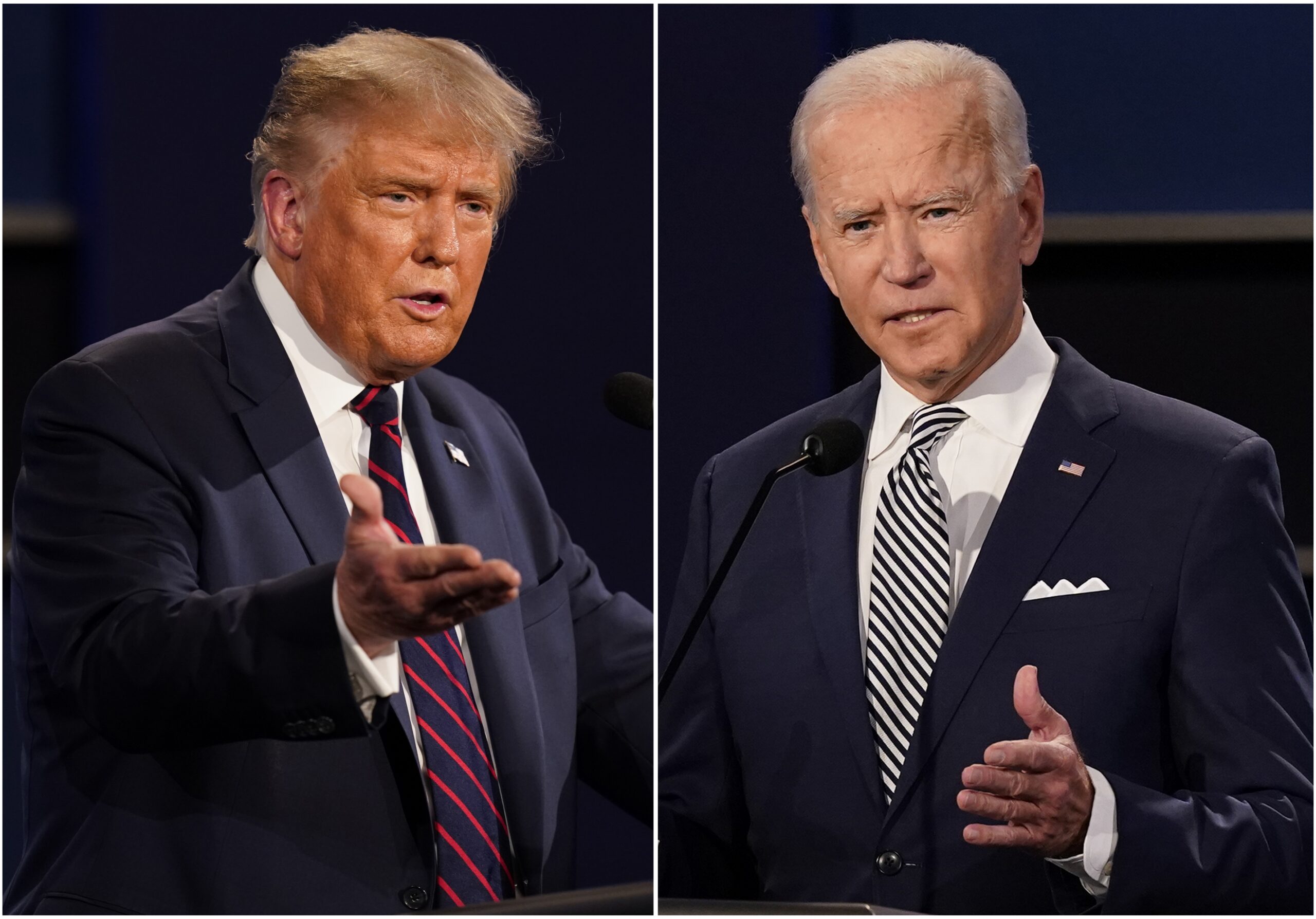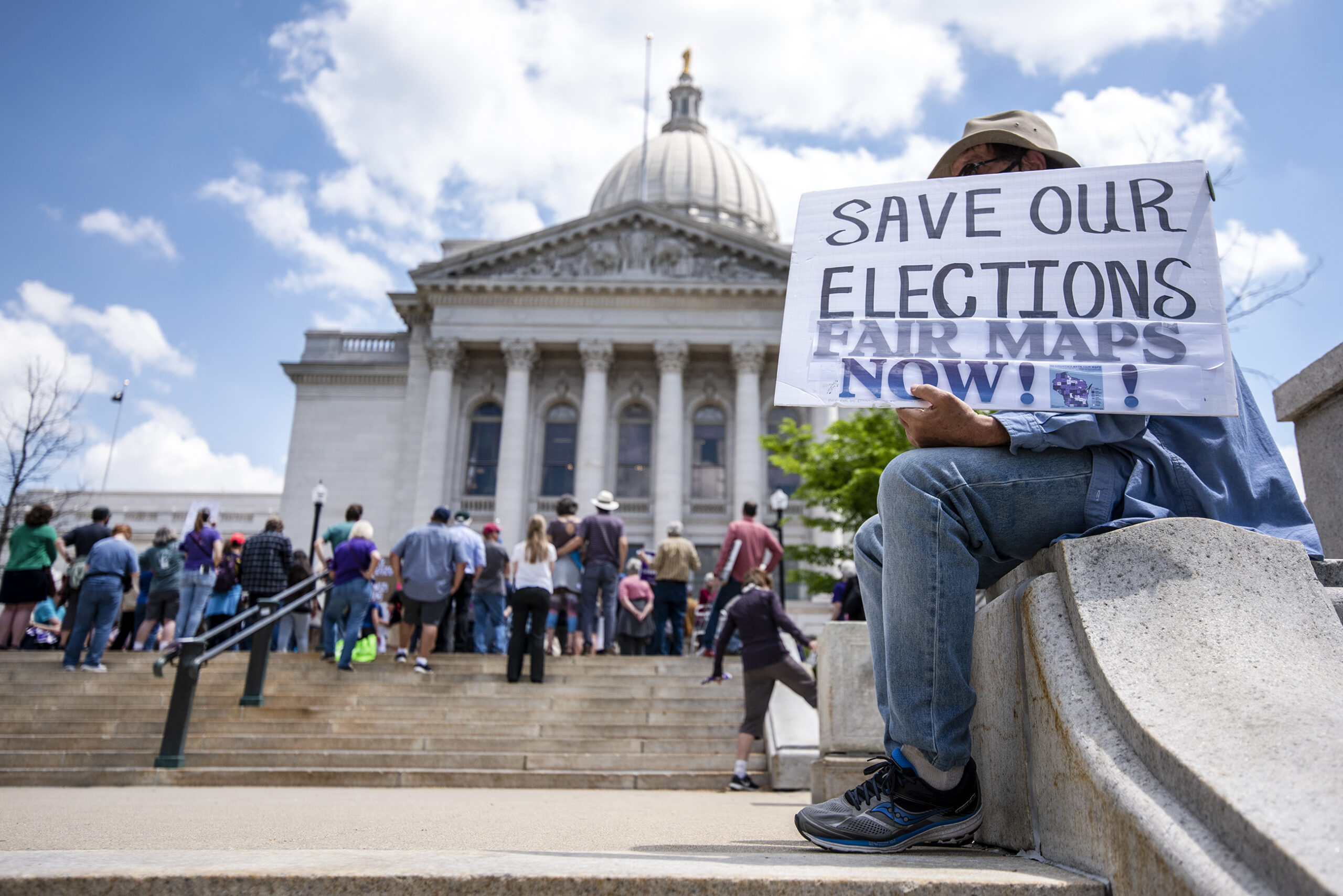Milwaukee County Judge Rebecca Dallet’s lopsided victory in Tuesday’s Wisconsin Supreme Court race gave Democrats reasons to believe the state’s political pendulum had at long last swung back in their direction.
National Democrats from former U.S. Attorney General Eric Holder to former Vice President Joe Biden hoped to use Dallet’s election to build momentum toward November. They got it, and then some.
Dallet defeated Sauk County Judge Michael Screnock by a 56 to 44 percent margin in a spring election that Wisconsin Republicans have dominated over the past decade.
Stay informed on the latest news
Sign up for WPR’s email newsletter.
“The margin is impressive,” said Marquette University Pollster Charles Franklin. “For November, what this means is that the wave that we’ve seen building — the advantage to Democrats — is still alive and well.”
Dallet won 24 counties that Democrat Hillary Clinton lost to President Donald Trump in Wisconsin’s 2016 presidential race.
She also ran up the numbers in Democratic strongholds, winning 81 percent of the vote in Dane County.
“It’s a remarkable number,” Franklin said. “We’ve seen the Dane County vote tilting more and more Democratic over the last four or five election cycles. Last night was sort of an extreme example of this.”
Dane County’s numbers contributed to Dallet’s lopsided victory, but she would defeated Screnock even without them.
She won most of southwest Wisconsin, a block of central Wisconsin counties, and key Fox Valley counties that had been trending strongly Republican.
For example, Dallet received 55 percent of the vote in Brown County, which is slightly higher than President Barack Obama received in the 2008 Democratic wave election.
Voter turnout Tuesday was roughly 22 percent of the state’s voting age population. That’s on the high side for a state Supreme Court race but dramatically lower than the turnout seen in November gubernatorial or presidential elections.
“Two-and-a-half times as many people are going to come to the polls in November,” said Franklin. “That means there are an awful lot of people who were on the sidelines in this Supreme Court race.”
But Franklin said that didn’t change the big takeaway from Tuesday.
“The big message is: ‘Blue wave builds,’” Franklin said.
Wisconsin Public Radio, © Copyright 2024, Board of Regents of the University of Wisconsin System and Wisconsin Educational Communications Board.






